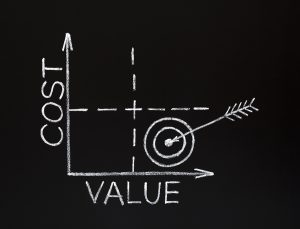Providing good after-sales support to your customers is expensive! Any services you provide should, therefore, contribute to both increasing  your customer’s satisfaction and giving your company a real competitive advantage.
your customer’s satisfaction and giving your company a real competitive advantage.
It is easy to determine whether the investments you make in improving the sales support services you offer are effective by doing the following analysis:
Step 1: Draw up a list of all the important after-sales customer service differentiators your company has (for example next day delivery, after sales guarantees, maintenance contracts, specialist skills training etc.)
Step 2: Determine the value (your perception of how important) a particular service is to your customers. To do this you can use a scale of one to three (low-medium-high).
Step 3: Next call your regular customers, the ones with whom you have a good relationship, give them your list of after-sales services and ask them how important they think they are. Assess their answers using the same scale mentioned in step 2 (low-medium-high).
Step 4: Give each after-sales service you provide a letter (A, B, C, D etc.) and enter these into a matrix in which you also record the assessment of your value of the service (step 2) against the value your customers give it (step 3).
Step 5: Compare the positioning of the after-sales support services you offer. Pay particular attention to those which show a difference between the value you place on it and the value your customers have given it.
Suppose you have three sales support services: A,B and C. Using the analysis described above you discover that service A is valued as of “high” from the point of view of both you and a given customer. Service B, on the other hand, is considered as high by you but is ranked as low by this particular customer, and service C is ranked as high by the customer but as low by you.
We would conclude from this analysis that our investment in providing sales support service A for our customers is worthwhile and pays off. But by offering service B, our company is actually losing money because the customer believes that service B is less important than the other post-sales services you offer.
Service C would represent a weak point in our post-sales support offering, as we could be neglecting to promote this service, which our customers judge to be very important to them, and so losing sales opportunities.
Of course, any add-on services you do decide are worthwhile to invest in and provide should be fully understood by your sales support team who should be well trained so that they can actively promote these.
